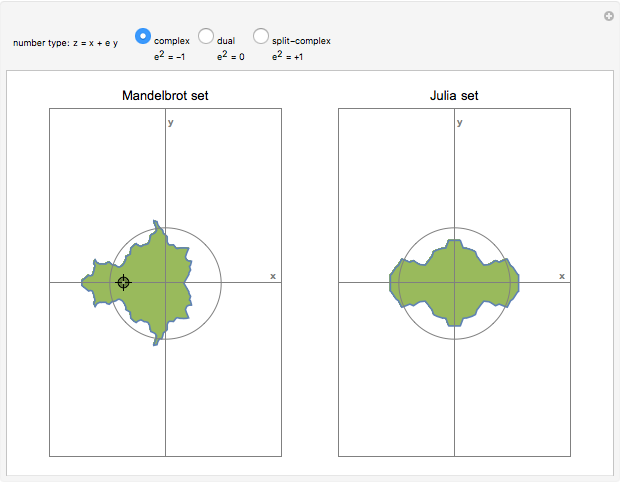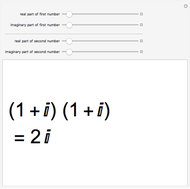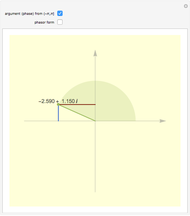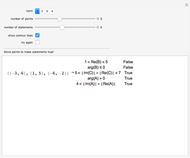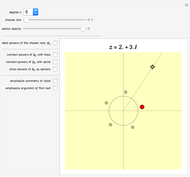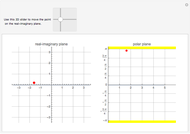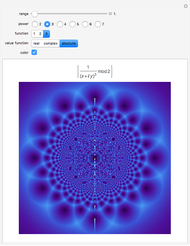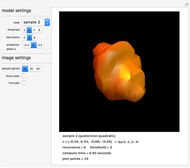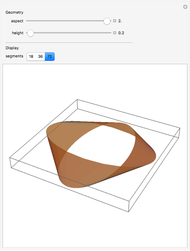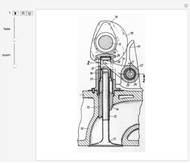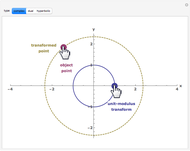Transformations of Complex, Dual, and Hyperbolic Numbers

Requires a Wolfram Notebook System
Interact on desktop, mobile and cloud with the free Wolfram Player or other Wolfram Language products.
This Demonstration compares the multiplicative transformation properties on the  plane of complex, dual, and hyperbolic numbers. These number types share the form
plane of complex, dual, and hyperbolic numbers. These number types share the form  , where
, where  and
and  are real numbers and
are real numbers and  has the defining characteristics:
has the defining characteristics:  for complex numbers,
for complex numbers,  for dual numbers, and
for dual numbers, and  for hyperbolic numbers. Their conjugates share the form
for hyperbolic numbers. Their conjugates share the form  and their modulus the form
and their modulus the form  The figure shows, for the selected number type,
The figure shows, for the selected number type,
Contributed by: Fred Klingener (March 2011)
Open content licensed under CC BY-NC-SA
Snapshots
Details
Hyperbolic numbers (sometimes called split-complex numbers) are useful for measuring distances in the Lorentz space-time plane (see G. Sobczyk, "The Hyperbolic Number Plane," The College Mathematics Journal, 26(4), 1995 pp. 268–280).
Permanent Citation
"Transformations of Complex, Dual, and Hyperbolic Numbers"
http://demonstrations.wolfram.com/TransformationsOfComplexDualAndHyperbolicNumbers/
Wolfram Demonstrations Project
Published: March 7 2011







